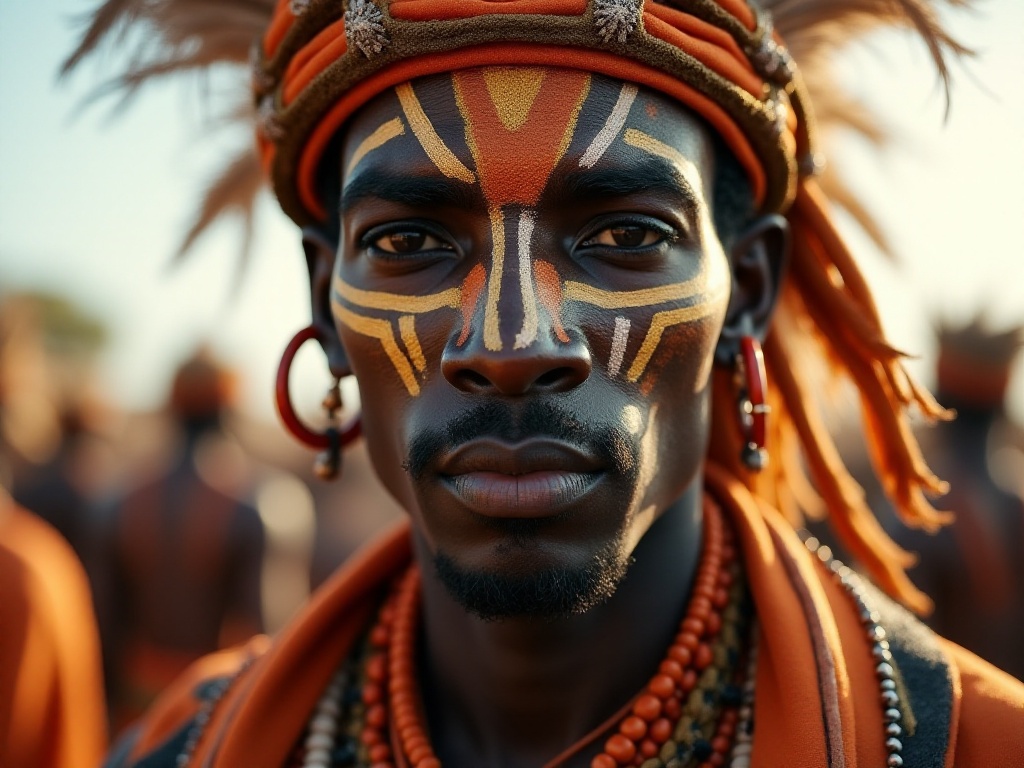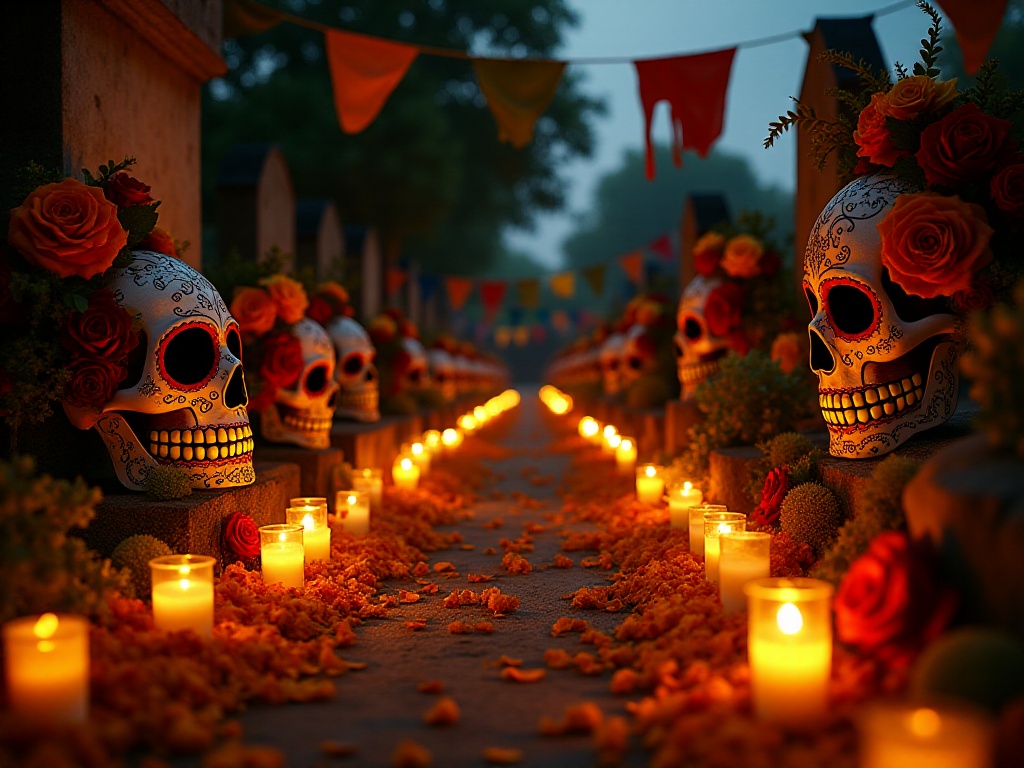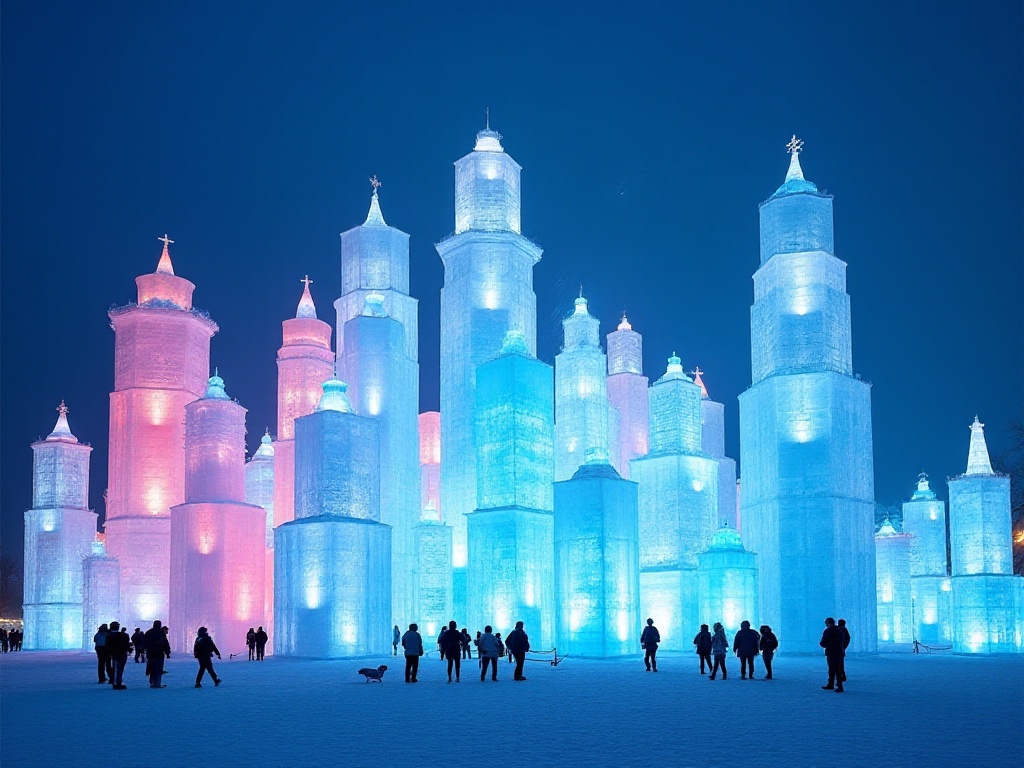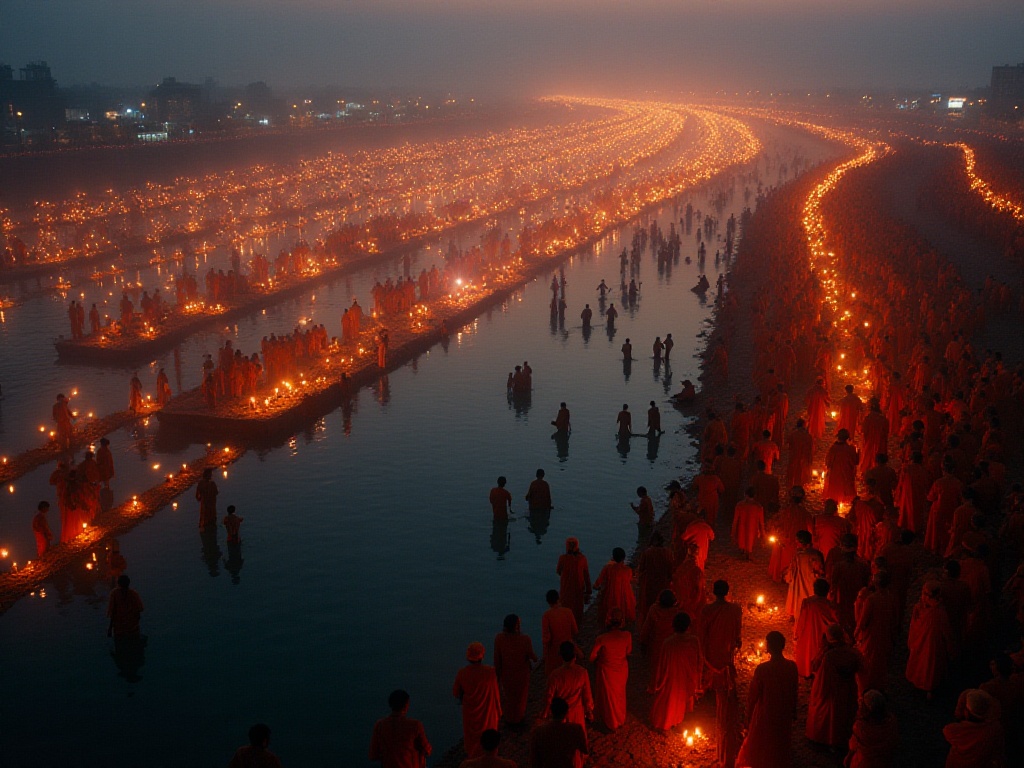Introduction
It's truly mind-blowing! The world's largest religious pilgrimage is India's Maha Kumbh Mela. This triennial festival is arguably the most incredible party in human history! Millions of pilgrims from around the world gather for this grand event, with crowds equivalent to ten World Cup finals combined. As someone who experienced it firsthand, I want to take you through this incredibly stunning cultural feast.
Historical Origins
The Kumbh Mela's story dates back to the 3rd century BCE, even earlier than China's Qin Dynasty! Believe it or not, the festival's origin is quite mystical. Legend has it that gods and demons fought over amrita (the elixir of immortality - think of it as the equivalent of an immortality pill in cultivation novels) in a place called the "Ocean of Milk." During this conflict, drops of amrita fell from the pot onto four earthly locations. These four sites blessed by amrita became the sacred locations of the Kumbh Mela: Allahabad, Haridwar, Nashik, and Ujjain.
Each sacred site has its unique story. For instance, Allahabad sits at the confluence of the Ganges and Yamuna rivers, where locals believe an invisible underground river, the Saraswati, forms a sacred triple confluence. In Hindu mythology, this is where Brahma performed the creation ceremony.
The festival rotates among these sacred sites, similar to how the Olympics moves between different cities. However, the Kumbh Mela is much larger than the Olympics and has a far longer history. Imagine - this tradition has continued since ancient times, surviving countless dynasty changes and wars, which is a miracle in itself.

Scale of Pilgrimage
The scale is absolutely incredible! The record set in 2013 is almost unbelievable: 6 million people bathing in the Ganges simultaneously in a single day! To put this in perspective, Denmark's entire population is 5.7 million, and Singapore's is 5.6 million. In other words, the number of people bathing in the Ganges that day exceeded the total population of a developed nation!
The festival received 120 million pilgrims throughout its duration, equivalent to Japan's entire population. If these people were to form a line with one meter between each person, the line would circle the Earth's equator three times! And these people didn't arrive gradually - they came within just a few weeks.
These pilgrims come from all over India, with some traveling by train for several days and others walking hundreds of kilometers. While wealthy pilgrims stay in luxury tents, the poor might sleep on the ground. But at the Ganges' edge, everyone is an equal pilgrim. This kind of scene can only be witnessed in India.
Ritual Details
The most important ritual of the Kumbh Mela is bathing during auspicious times (Shahi Snan). These times aren't randomly chosen but calculated using complex astronomical calendars. The 2019 festival had six such auspicious moments, each triggering a wave of pilgrimage activity.
Pilgrims begin queuing at 2-3 AM, waiting for the sunrise bath. I witnessed hundreds of thousands of people chanting in unison at dawn - a spectacle that words cannot describe. Countless makeshift changing rooms line the riverbank, but many people return to their camps in wet clothes, believing these garments blessed by holy water bring good fortune.
The most special is the "Royal Bath" ceremony. Before each auspicious moment, various ascetic sects organize grand processions. The ascetics, bare-chested and covered in ash, ride decorated elephants, sit on floats, or walk barefoot. They are the first to enter the Ganges for bathing, a tradition that has reportedly continued for centuries.

Cultural Significance
Throughout the camp, you can see various unique ascetics. Some sadhus have maintained the same posture for over a decade, like one who has kept his right hand raised until it atrophied. Others can lie on beds of nails or survive on minimal breath. These ascetics' stories made me contemplate: in this materialistic age, why do some people still choose such extreme ascetic lives?
Every evening, various religious discussions take place in the camp. Interestingly, these discussions aren't limited to religious topics. I attended an environmental debate where a sadhu used Hindu scriptures to argue the importance of human-nature harmony. Others discussed the relationship between modern technology and traditional faith, and the development of Indian culture in the context of globalization.
These discussions made me realize that the Kumbh Mela isn't just a religious festival but a microcosm of Indian culture. Here, ancient traditions collide and merge with modern civilization, creating unique cultural sparks.
On-site Experience
As someone who experienced it firsthand, I must say that no photo or video can fully capture the magnificence of the Kumbh Mela. Imagine a tent city covering 58 square kilometers, erected in just a few months, containing over 200,000 tents! This temporary city's area equals 80 Forbidden Cities and is larger than many small cities.
The camp's infrastructure is quite comprehensive, with 140 kilometers of temporary roads, 550 kilometers of electrical wiring, and 150,000 temporary streetlights. Each area has its medical point, with 4 large hospitals and countless small clinics. For security, 40 temporary police stations were established. Most interestingly, the camp has its own radio station broadcasting information in multiple languages 24/7.
Accommodation ranges from luxury to basic. The most basic is the free tent area, providing just shelter from wind and rain. Mid-range tents have simple beds and bathrooms. The luxury tent area is equivalent to a five-star hotel, with air conditioning, hot water, and personal butler service.
Food supply is also a massive operation. The camp has thousands of dining halls, some capable of serving tens of thousands of people simultaneously. Many sects provide free meals - I ate at a large dining hall where hundreds of volunteers prepared Indian flatbreads and curry, creating a spectacular scene.
Most impressive is the nighttime view. Countless campfires dot the camp, accompanied by alternating chants and songs, enveloping the entire camp in a mysterious atmosphere. By the river, you can see countless small oil lamps floating downstream, a breathtaking sight.

Security Management
Managing such a massive event is no easy task. The 2019 festival employed over 30,000 police and security personnel. They not only maintain order but also guard against terrorist threats and other security risks. The entire camp is equipped with over 10,000 HD surveillance cameras, forming a 24-hour command center.
The coolest part is their use of drones for aerial patrol. These drones aren't just for security - they also monitor crowd density to help manage flow. Electronic displays at key intersections show real-time congestion levels in various areas.
For emergencies, the camp has multiple helicopter landing pads ready for medical evacuations. Hundreds of lifeguard stations line the riverbank, staffed with professional lifeguards. Considering potential stampedes, main roads are built extra wide, and key intersections have flow control facilities.
Environmental Issues
Honestly, I was shocked to learn that 300 tons of waste are generated daily - equivalent to a medium-sized city's daily waste. The organizers have put tremendous effort into addressing this issue.
A cleaning crew of 50,000 works in three shifts around the clock. Each area has waste sorting stations, with recyclables sent to specialized processing centers. To reduce plastic pollution, organizers specifically required all food vendors to use biodegradable utensils.
River water pollution is another major issue. Dedicated teams monitor water quality daily, and water purification systems are installed at main bathing areas. Additionally, upstream dam water release is regulated to maintain river flow and promote natural purification.
Most touching is how many pilgrims voluntarily participate in environmental protection. I saw young people picking up trash by the river, saying it's also a form of spiritual practice. Some camps even organize environmental lectures teaching people how to reduce waste.
Digital Age
The 2019 Kumbh Mela launched its first mobile app, adding a tech-savvy element to the event. The app shows real-time crowd conditions, helps locate lost companions, and provides activity information.
The coolest feature is its AR function - you can see the location and distance of important landmarks through your phone camera. For first-time pilgrims, this is a lifesaver. No wonder it reached 500,000 downloads.
Many sadhus in the camp also use smartphones. I saw a long-bearded ascetic livestreaming his teachings to followers worldwide. Some ascetics even have YouTube channels sharing their spiritual insights. This blend of tradition and modernity makes one reflect on the changing times.

Economic Impact
The economic benefits of the Kumbh Mela are astounding. The 2019 event generated over 12 billion rupees (approximately 1.1 billion RMB) in local income. Accommodation alone presents huge business opportunities. The most luxurious tent suites cost 10,000 rupees (about 900 RMB) per night, yet they're still hard to book.
Many international brands have seized this opportunity. I saw Coca-Cola operating several beverage stations in the camp, and Starbucks setting up temporary stores at key intersections. Local vendors make substantial profits - selling incense and offerings alone can earn thousands of rupees daily.
During the festival, airfare from Delhi to Haridwar multiplies several times, and train tickets are nearly impossible to get. Many hotels and guesthouses are fully booked half a year in advance. The Kumbh Mela has become a crucial engine driving local economic development.
Future Outlook
The 2025 Kumbh Mela will be held in Haridwar, Uttarakhand, and many are already preparing. Organizers plan to build smart camps using IoT technology for automated management. They also plan to introduce 5G networks to support more innovative applications.
If you're planning to experience this event, start planning now. Remember to book flights and train tickets at least six months in advance, or you might not get any. Accommodation should also be arranged early, especially if you want to stay in luxury tents.
Organizers say they might limit total attendance this time, so register early on the official website. They're also developing a new mobile app, reportedly adding VR tour features to allow people worldwide to virtually experience the Kumbh Mela atmosphere.

Conclusion
Every time I recall my experience at the Kumbh Mela, I'm filled with emotion. Here, I witnessed the power of faith, saw the miracle of human civilization, and deeply understood the importance of cultural heritage. In this materialistic age, perhaps we all need such a spiritual bath to pause and contemplate life's meaning. This isn't just a religious festival, but a cross-temporal cultural experience and a soul-stirring spiritual journey.


